Jin Lu
Rethinking the Potential of Layer Freezing for Efficient DNN Training
Aug 20, 2025Abstract:With the growing size of deep neural networks and datasets, the computational costs of training have significantly increased. The layer-freezing technique has recently attracted great attention as a promising method to effectively reduce the cost of network training. However, in traditional layer-freezing methods, frozen layers are still required for forward propagation to generate feature maps for unfrozen layers, limiting the reduction of computation costs. To overcome this, prior works proposed a hypothetical solution, which caches feature maps from frozen layers as a new dataset, allowing later layers to train directly on stored feature maps. While this approach appears to be straightforward, it presents several major challenges that are severely overlooked by prior literature, such as how to effectively apply augmentations to feature maps and the substantial storage overhead introduced. If these overlooked challenges are not addressed, the performance of the caching method will be severely impacted and even make it infeasible. This paper is the first to comprehensively explore these challenges and provides a systematic solution. To improve training accuracy, we propose \textit{similarity-aware channel augmentation}, which caches channels with high augmentation sensitivity with a minimum additional storage cost. To mitigate storage overhead, we incorporate lossy data compression into layer freezing and design a \textit{progressive compression} strategy, which increases compression rates as more layers are frozen, effectively reducing storage costs. Finally, our solution achieves significant reductions in training cost while maintaining model accuracy, with a minor time overhead. Additionally, we conduct a comprehensive evaluation of freezing and compression strategies, providing insights into optimizing their application for efficient DNN training.
ADLGen: Synthesizing Symbolic, Event-Triggered Sensor Sequences for Human Activity Modeling
May 23, 2025Abstract:Real world collection of Activities of Daily Living data is challenging due to privacy concerns, costly deployment and labeling, and the inherent sparsity and imbalance of human behavior. We present ADLGen, a generative framework specifically designed to synthesize realistic, event triggered, and symbolic sensor sequences for ambient assistive environments. ADLGen integrates a decoder only Transformer with sign based symbolic temporal encoding, and a context and layout aware sampling mechanism to guide generation toward semantically rich and physically plausible sensor event sequences. To enhance semantic fidelity and correct structural inconsistencies, we further incorporate a large language model into an automatic generate evaluate refine loop, which verifies logical, behavioral, and temporal coherence and generates correction rules without manual intervention or environment specific tuning. Through comprehensive experiments with novel evaluation metrics, ADLGen is shown to outperform baseline generators in statistical fidelity, semantic richness, and downstream activity recognition, offering a scalable and privacy-preserving solution for ADL data synthesis.
Perturbation-efficient Zeroth-order Optimization for Hardware-friendly On-device Training
Apr 28, 2025Abstract:Zeroth-order (ZO) optimization is an emerging deep neural network (DNN) training paradigm that offers computational simplicity and memory savings. However, this seemingly promising approach faces a significant and long-ignored challenge. ZO requires generating a substantial number of Gaussian random numbers, which poses significant difficulties and even makes it infeasible for hardware platforms, such as FPGAs and ASICs. In this paper, we identify this critical issue, which arises from the mismatch between algorithm and hardware designers. To address this issue, we proposed PeZO, a perturbation-efficient ZO framework. Specifically, we design random number reuse strategies to significantly reduce the demand for random number generation and introduce a hardware-friendly adaptive scaling method to replace the costly Gaussian distribution with a uniform distribution. Our experiments show that PeZO reduces the required LUTs and FFs for random number generation by 48.6\% and 12.7\%, and saves at maximum 86\% power consumption, all without compromising training performance, making ZO optimization feasible for on-device training. To the best of our knowledge, we are the first to explore the potential of on-device ZO optimization, providing valuable insights for future research.
From Task-Specific Models to Unified Systems: A Review of Model Merging Approaches
Mar 12, 2025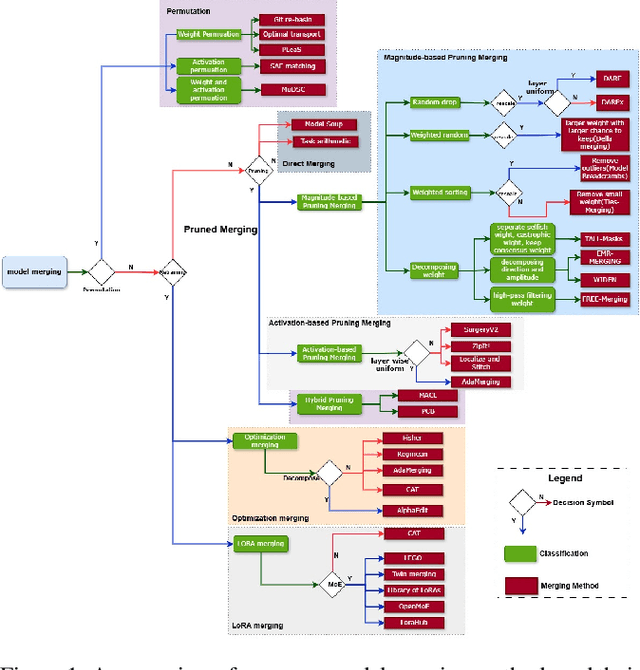
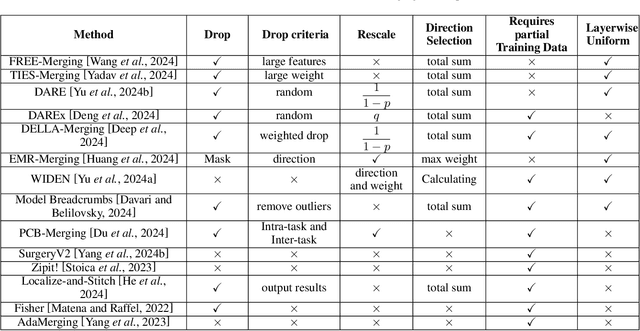
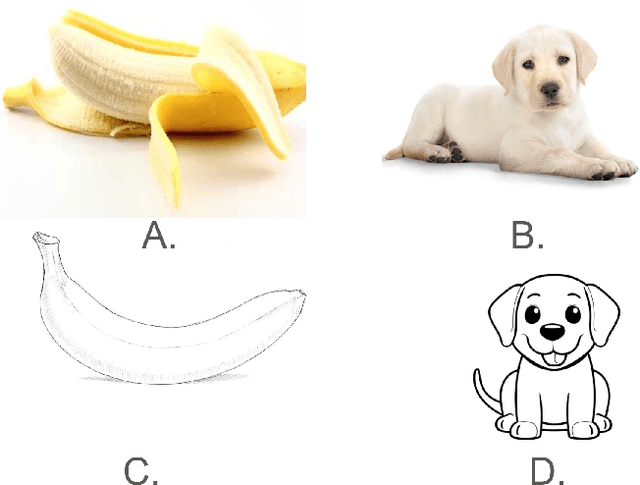
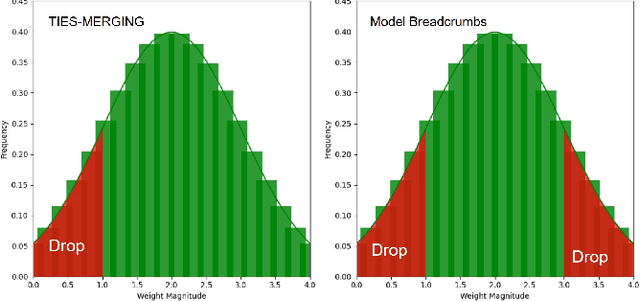
Abstract:Model merging has achieved significant success, with numerous innovative methods proposed to enhance capabilities by combining multiple models. However, challenges persist due to the lack of a unified framework for classification and systematic comparative analysis, leading to inconsistencies in terminologies and categorizations. Meanwhile, as an increasing number of fine-tuned models are publicly available, their original training data often remain inaccessible due to privacy concerns or intellectual property restrictions. This makes traditional multi-task learning based on shared training data impractical. In scenarios where direct access to training data is infeasible, merging model parameters to create a unified model with broad generalization across multiple domains becomes crucial, further underscoring the importance of model merging techniques. Despite the rapid progress in this field, a comprehensive taxonomy and survey summarizing recent advances and predicting future directions are still lacking. This paper addresses these gaps by establishing a new taxonomy of model merging methods, systematically comparing different approaches, and providing an overview of key developments. By offering a structured perspective on this evolving area, we aim to help newcomers quickly grasp the field's landscape and inspire further innovations.
Fact or Guesswork? Evaluating Large Language Model's Medical Knowledge with Structured One-Hop Judgment
Feb 20, 2025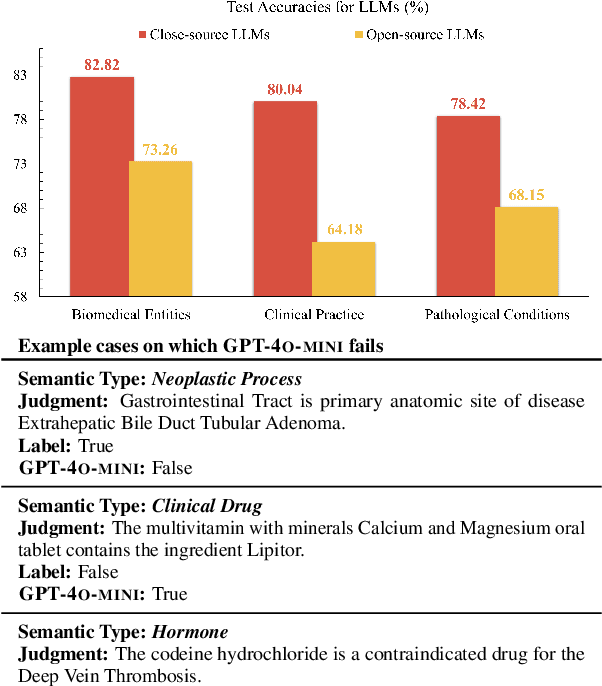
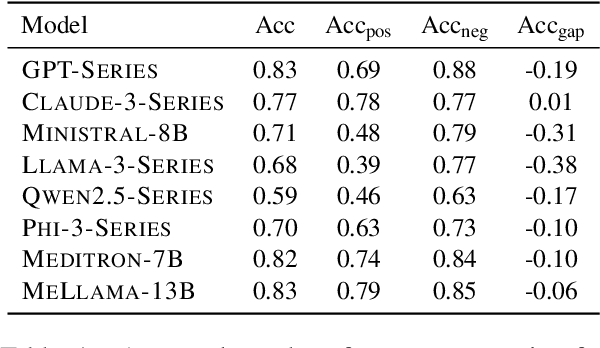
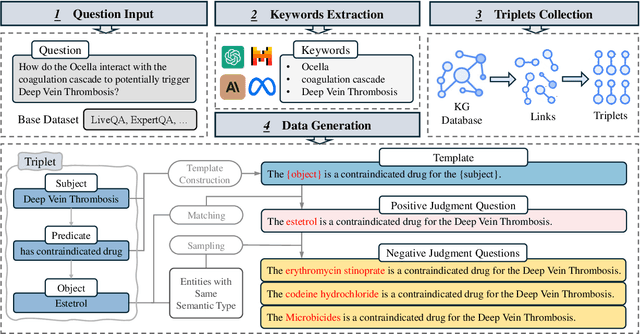
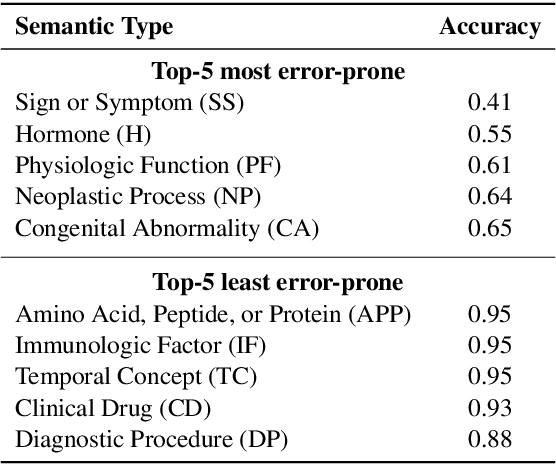
Abstract:Large language models (LLMs) have been widely adopted in various downstream task domains. However, their ability to directly recall and apply factual medical knowledge remains under-explored. Most existing medical QA benchmarks assess complex reasoning or multi-hop inference, making it difficult to isolate LLMs' inherent medical knowledge from their reasoning capabilities. Given the high-stakes nature of medical applications, where incorrect information can have critical consequences, it is essential to evaluate how well LLMs encode, retain, and recall fundamental medical facts. To bridge this gap, we introduce the Medical Knowledge Judgment, a dataset specifically designed to measure LLMs' one-hop factual medical knowledge. MKJ is constructed from the Unified Medical Language System (UMLS), a large-scale repository of standardized biomedical vocabularies and knowledge graphs. We frame knowledge assessment as a binary judgment task, requiring LLMs to verify the correctness of medical statements extracted from reliable and structured knowledge sources. Our experiments reveal that LLMs struggle with factual medical knowledge retention, exhibiting significant performance variance across different semantic categories, particularly for rare medical conditions. Furthermore, LLMs show poor calibration, often being overconfident in incorrect answers. To mitigate these issues, we explore retrieval-augmented generation, demonstrating its effectiveness in improving factual accuracy and reducing uncertainty in medical decision-making.
Harmony in Divergence: Towards Fast, Accurate, and Memory-efficient Zeroth-order LLM Fine-tuning
Feb 05, 2025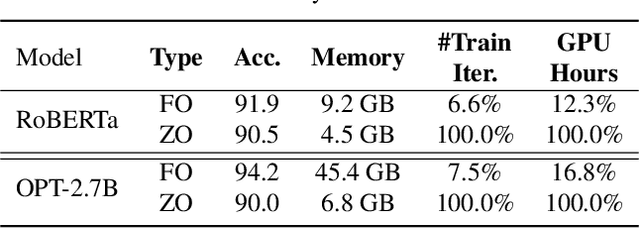
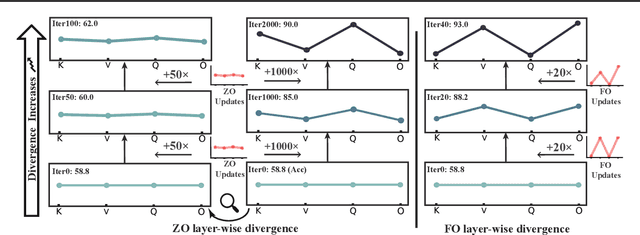

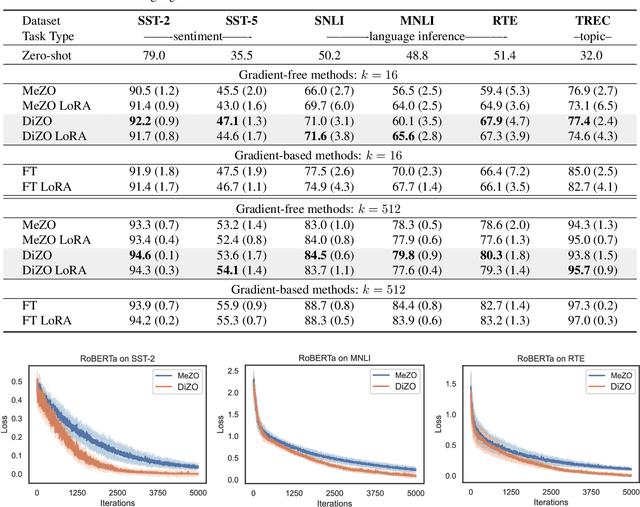
Abstract:Large language models (LLMs) excel across various tasks, but standard first-order (FO) fine-tuning demands considerable memory, significantly limiting real-world deployment. Recently, zeroth-order (ZO) optimization stood out as a promising memory-efficient training paradigm, avoiding backward passes and relying solely on forward passes for gradient estimation, making it attractive for resource-constrained scenarios. However, ZO method lags far behind FO method in both convergence speed and accuracy. To bridge the gap, we introduce a novel layer-wise divergence analysis that uncovers the distinct update pattern of FO and ZO optimization. Aiming to resemble the learning capacity of FO method from the findings, we propose \textbf{Di}vergence-driven \textbf{Z}eroth-\textbf{O}rder (\textbf{DiZO}) optimization. DiZO conducts divergence-driven layer adaptation by incorporating projections to ZO updates, generating diverse-magnitude updates precisely scaled to layer-wise individual optimization needs. Our results demonstrate that DiZO significantly reduces the needed iterations for convergence without sacrificing throughput, cutting training GPU hours by up to 48\% on various datasets. Moreover, DiZO consistently outperforms the representative ZO baselines in fine-tuning RoBERTa-large, OPT-series, and Llama-series on downstream tasks and, in some cases, even surpasses memory-intensive FO fine-tuning.
Enhancing Visual Inspection Capability of Multi-Modal Large Language Models on Medical Time Series with Supportive Conformalized and Interpretable Small Specialized Models
Jan 27, 2025



Abstract:Large language models (LLMs) exhibit remarkable capabilities in visual inspection of medical time-series data, achieving proficiency comparable to human clinicians. However, their broad scope limits domain-specific precision, and proprietary weights hinder fine-tuning for specialized datasets. In contrast, small specialized models (SSMs) excel in targeted tasks but lack the contextual reasoning required for complex clinical decision-making. To address these challenges, we propose ConMIL (Conformalized Multiple Instance Learning), a decision-support SSM that integrates seamlessly with LLMs. By using Multiple Instance Learning (MIL) to identify clinically significant signal segments and conformal prediction for calibrated set-valued outputs, ConMIL enhances LLMs' interpretative capabilities for medical time-series analysis. Experimental results demonstrate that ConMIL significantly improves the performance of state-of-the-art LLMs, such as ChatGPT4.0 and Qwen2-VL-7B. Specifically, \ConMIL{}-supported Qwen2-VL-7B achieves 94.92% and 96.82% precision for confident samples in arrhythmia detection and sleep staging, compared to standalone LLM accuracy of 46.13% and 13.16%. These findings highlight the potential of ConMIL to bridge task-specific precision and broader contextual reasoning, enabling more reliable and interpretable AI-driven clinical decision support.
Large Language Models for Bioinformatics
Jan 10, 2025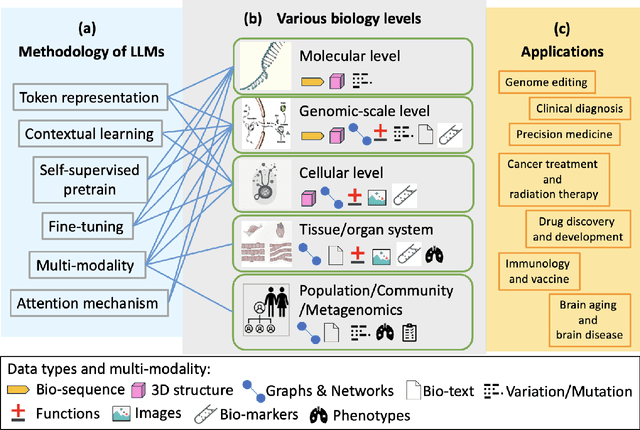
Abstract:With the rapid advancements in large language model (LLM) technology and the emergence of bioinformatics-specific language models (BioLMs), there is a growing need for a comprehensive analysis of the current landscape, computational characteristics, and diverse applications. This survey aims to address this need by providing a thorough review of BioLMs, focusing on their evolution, classification, and distinguishing features, alongside a detailed examination of training methodologies, datasets, and evaluation frameworks. We explore the wide-ranging applications of BioLMs in critical areas such as disease diagnosis, drug discovery, and vaccine development, highlighting their impact and transformative potential in bioinformatics. We identify key challenges and limitations inherent in BioLMs, including data privacy and security concerns, interpretability issues, biases in training data and model outputs, and domain adaptation complexities. Finally, we highlight emerging trends and future directions, offering valuable insights to guide researchers and clinicians toward advancing BioLMs for increasingly sophisticated biological and clinical applications.
HELENE: Hessian Layer-wise Clipping and Gradient Annealing for Accelerating Fine-tuning LLM with Zeroth-order Optimization
Nov 16, 2024



Abstract:Fine-tuning large language models (LLMs) poses significant memory challenges, as the back-propagation process demands extensive resources, especially with growing model sizes. Recent work, MeZO, addresses this issue using a zeroth-order (ZO) optimization method, which reduces memory consumption by matching the usage to the inference phase. However, MeZO experiences slow convergence due to varying curvatures across model parameters. To overcome this limitation, we introduce HELENE, a novel scalable and memory-efficient optimizer that integrates annealed A-GNB gradients with a diagonal Hessian estimation and layer-wise clipping, serving as a second-order pre-conditioner. This combination allows for faster and more stable convergence. Our theoretical analysis demonstrates that HELENE improves convergence rates, particularly for models with heterogeneous layer dimensions, by reducing the dependency on the total parameter space dimension. Instead, the method scales with the largest layer dimension, making it highly suitable for modern LLM architectures. Experimental results on RoBERTa-large and OPT-1.3B across multiple tasks show that HELENE achieves up to a 20x speedup compared to MeZO, with average accuracy improvements of 1.5%. Furthermore, HELENE remains compatible with both full parameter tuning and parameter-efficient fine-tuning (PEFT), outperforming several state-of-the-art optimizers. The codes will be released after reviewing.
Towards Next-Generation Medical Agent: How o1 is Reshaping Decision-Making in Medical Scenarios
Nov 16, 2024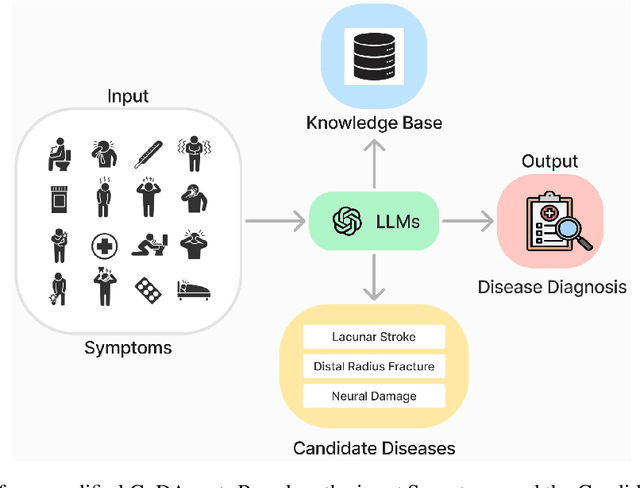

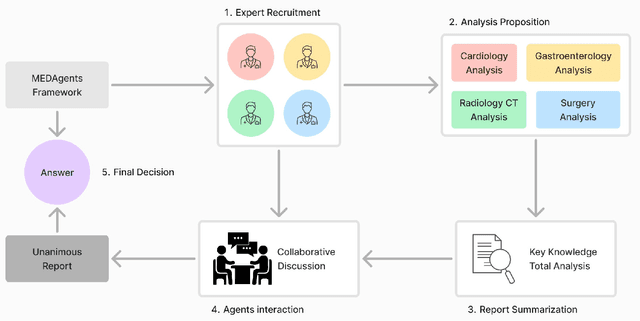

Abstract:Artificial Intelligence (AI) has become essential in modern healthcare, with large language models (LLMs) offering promising advances in clinical decision-making. Traditional model-based approaches, including those leveraging in-context demonstrations and those with specialized medical fine-tuning, have demonstrated strong performance in medical language processing but struggle with real-time adaptability, multi-step reasoning, and handling complex medical tasks. Agent-based AI systems address these limitations by incorporating reasoning traces, tool selection based on context, knowledge retrieval, and both short- and long-term memory. These additional features enable the medical AI agent to handle complex medical scenarios where decision-making should be built on real-time interaction with the environment. Therefore, unlike conventional model-based approaches that treat medical queries as isolated questions, medical AI agents approach them as complex tasks and behave more like human doctors. In this paper, we study the choice of the backbone LLM for medical AI agents, which is the foundation for the agent's overall reasoning and action generation. In particular, we consider the emergent o1 model and examine its impact on agents' reasoning, tool-use adaptability, and real-time information retrieval across diverse clinical scenarios, including high-stakes settings such as intensive care units (ICUs). Our findings demonstrate o1's ability to enhance diagnostic accuracy and consistency, paving the way for smarter, more responsive AI tools that support better patient outcomes and decision-making efficacy in clinical practice.
 Add to Chrome
Add to Chrome Add to Firefox
Add to Firefox Add to Edge
Add to Edge